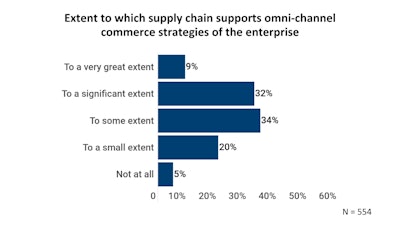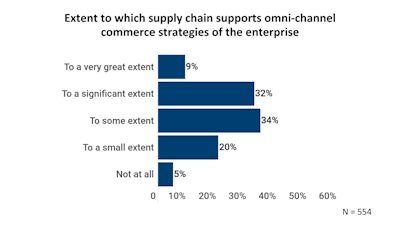
In terms of customer expectations, we live in a world created by Amazon. Consumers expect to immediately access information online about a specific product and its availability and then very quickly obtain that product. Consumers want seamless options to learn about, order, pay for and receive a product across online and physical spaces. And, these expectations have seeped from retail into all realms of commerce.
An omnichannel supply chain supports these expectations by creating a single supply chain, integrated across locations and websites, with stock updated in real time and consistent visibility for employees, partners and customers. This is the ideal for many organizations, but requires years of substantial investment, planning and coordination.
Some organizations only have the appearance of omnichannel supply chains for consumers. But, in actuality, the back-end of the supply chain has distinct multi-channels. And, operations behind the scenes—to quickly ship a specific item from a warehouse to a storefront, for example—are incurred at a greater expense in order to provide an ostensibly seamless customer experience.
A core concern in this discussion is flexibility. Organizations want to provide a flexible model for in-person and online commerce, but this requires a sophisticated supply chain plan using automation, complete visibility across partners and in-house operations, and ideally, an integrated platform for inventory planning, order management, stock replenishment and even stock transit.
In short, it requires a mature and efficient supply chain management function.
According to APQC’s Open Standards Benchmarking data in supply chain planning, less than half of organizations support an omnichannel commerce strategy to a significant or very great extent.
 According to APQC’s Open Standards Benchmarking data in supply chain planning, less than half of organizations support an omnichannel commerce strategy to a significant or very great extent.APQC
According to APQC’s Open Standards Benchmarking data in supply chain planning, less than half of organizations support an omnichannel commerce strategy to a significant or very great extent.APQC
This is an indicator in which integration needs to occur extensively for the omnichannel structure to fulfill its purpose, thus providing an opportunity to improve for more than 90% of organizations. The supply chain strategy needs an explicit plan to mature omnichannel efforts (beyond simply purchasing an integrated platform). This involves assessing all customer touchpoints, maintaining a thorough understanding of customer needs and communication preferences and establishing the infrastructure to seamlessly connect those touchpoints. Organizations should determine their appropriate approach to balance the desired customer service level, customer support/distribution/technology costs and supply chain agility. After all, organizations need to not only please the customer, but also maintain a sustainable cost-to-serve.
Those organizations that do support an omnichannel commerce strategy outperform other organizations. The customer order cycle time for omnichannel organizations is half of those without (or with barely) such a commerce strategy. As organizations focus on supply chain responsiveness, omnichannel support is a key strategic concern.
 The customer order cycle time for omnichannel organizations
The customer order cycle time for omnichannel organizations
is half of those without (or with barely) such a commerce strategy.APQC













